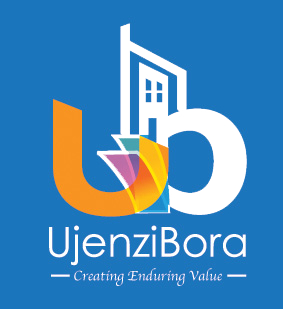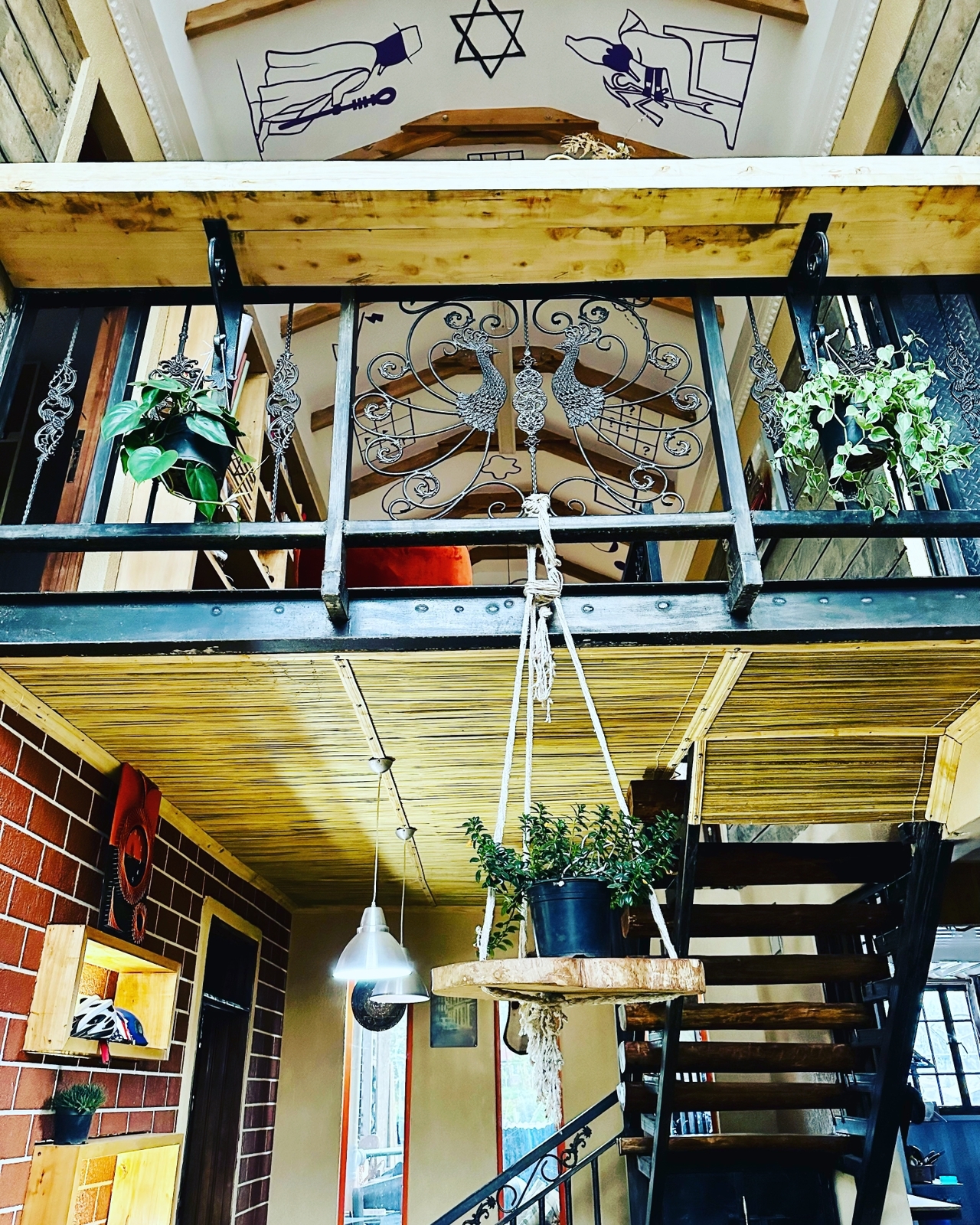A Practical Guide: The Merits of Using Locally Available Building Materials for Sustainable Living.
With the ever-increasing cost of materials and labour in the Kenyan construction industry, it is more important than ever to explore the potential of locally available building materials. These materials are often cheaper, more readily available, and have a lower environmental impact. By using these materials, we can build strong, durable, and cost-effective structures that are both aesthetically pleasing and structurally sound.
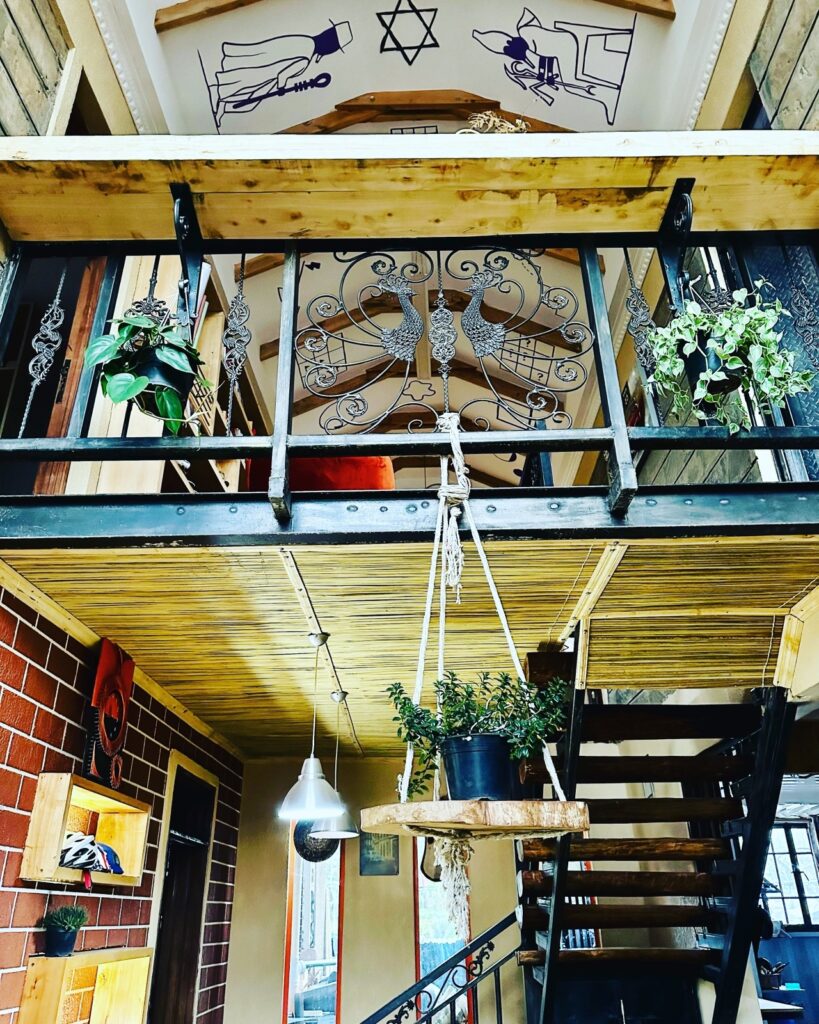
One of the most popular locally available building materials is timber. This is because timber is relatively easy to source and is easy to work with. With a wide range of species available, it is possible to create structures of any size and shape. As an added bonus, timber is also an excellent insulator, making it ideal for keeping your home warm in cold weather and cool in hot weather. This includes timber offcuts which still retain the primary virtues of timber as an aesthetic insulator.
Plant enough timber early enough and you will save a coin when setting out your house profile, formwork and finishes.
In addition to timber, other locally available building materials include stone, clay, and straw. These materials can be used to create solid and durable walls, with the added benefit of being able to maintain a comfortable temperature throughout the year.
Clay is also great for creating drainage systems and retaining walls, while stone can be used to create beautiful and unique features in a home. Finally, there are a number of other locally available materials that can be used to create aesthetically pleasing and practical structures.
Bamboo, for example, is an excellent material for creating structures such as fences and trellises. It is also a great choice for flooring, as it is both durable and attractive. By making use of these locally available building materials, you can create a beautiful and cost-effective home with minimal environmental impact. By embracing these materials and making the most of their unique properties, you can ensure that your home is built to last.
Here is a Substantive Guide to Sustainable Locally Available Materials: found in Kenya:
- Bamboo: Bamboo is a highly renewable natural resource that is becoming increasingly popular in the Kenyan construction industry. It is strong, lightweight, and resilient and can be used for many different applications, including fencing, flooring, and trellises. Bamboo is especially common in coastal areas and is easy to find. The Owner of River Isiukhu Tented Camp is on this path attempting good experiments with Bamboo and other Locally Available Materials What a pleasant surprise! “The more you look, the more you see.”
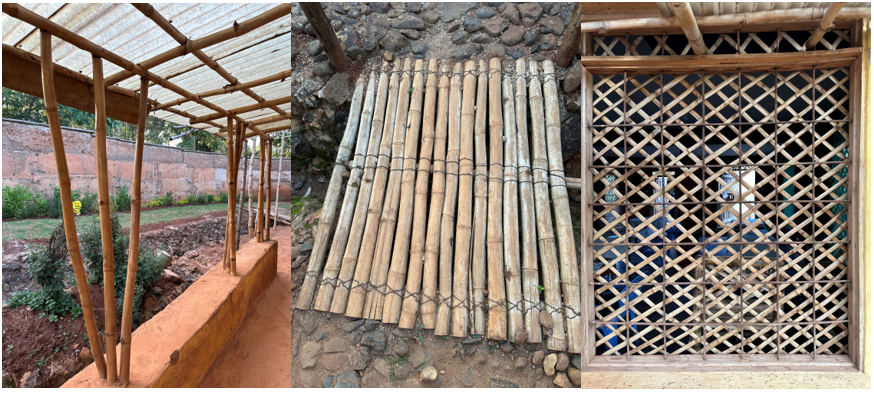 Notice:
Notice:- Bamboo Trellis Window
- Bamboo Foot Bridge
- Timber: Timber is a classic building material with a wide range of uses. It is strong, durable, and can be used for framing, flooring, and decks. It is relatively easy to find in Kenya, but is most commonly found in forests and wooded areas.
- Stone: Stone is a classic building material that has been used for centuries. It is strong, durable, and aesthetically pleasing and can be used for walls, floors, and fireplaces. Stone is most commonly found in quarries, but can also be found in many other locations.
- Clay: Clay is a versatile material that can be used in many different ways in the construction industry. It can be used to create bricks, tiles, and other building materials. Clay is most commonly found in areas with a high water table, such as near rivers, lakes, and wetlands.
- Straw: Straw is a lightweight and cost-effective building material that is becoming increasingly popular in the Kenyan construction industry. It can be used to create walls, roofs, and floors and has excellent insulation properties. Straw is easy to find in many rural areas.
- Recycled materials: Recycled materials are becoming increasingly popular in the Kenyan construction industry due to their low cost and environmental benefits. These materials can be used to create walls, floors, and other building materials. They are easy to find in many places and can be used for a variety of applications.
- Adobe bricks: Adobe bricks are a classic building material that has been used for centuries. They are made from a mixture of clay, sand, and straw and are strong, durable, and aesthetically pleasing. Adobe bricks are most commonly found in arid climates and can be used for walls, floors, and other building materials.
- Compressed earth blocks: Compressed earth blocks (CEBs) are a type of building material made from soil and other natural materials. They are strong, durable, and environmentally friendly and can be used for walls, floors, and other building materials. CEBs are most commonly found in areas with a high water table, such as near rivers, lakes, and wetlands. Bricks and erath blocks can replace Industrial gutters as demonstrated by Francie Kere at Gando Teachers Housing (Burkina Faso)

- Hempcrete: In Kenya, some firms hold legal licenses that allow them to carry out research on industrial hemp. One such company is Green Corporation Global that has a partnership with Jomo Kenyatta University of Agriculture and Technology (JKUAT) and private companies to develop several industrial hemp products. Hempcrete is a type of building material made from a mixture of hemp, lime, and water. It is lightweight, strong, and highly sustainable and can be used for walls, floors, and other building materials. Hempcrete is most commonly found in areas with a high water table, such as near rivers, lakes, and wetlands.
- Recycled glass: Recycled glass is becoming increasingly popular in the Kenyan construction industry due to its low cost and environmental benefits. It can be used to create walls, floors, and other building materials. Recycled glass is easy to find in many places and can be used for a variety of applications.
- Recycled plastic: Recycled plastic is an increasingly popular building material in the Kenyan construction industry due to its low cost and environmental benefits. It can be used to create walls, floors, and other building materials. Recycled plastic is easy to find in many places and can be used for a variety of applications.
- Rammed earth: Rammed earth is a type of building material made from a mixture of soil and other natural materials. It is strong, durable, and environmentally friendly and can be used for walls, floors, and other building materials. Rammed earth is most commonly found in areas with a high water table, such as near rivers, lakes, and wetlands.
- Ferrocement: Ferrocement is a type of reinforced concrete that is becoming increasingly popular in the Kenyan construction industry. It is strong, durable, and aesthetically pleasing and can be used for walls, floors, and other building materials. Ferrocement is easy to find in many places and can be used for a variety of applications.
- Natural fibres: Natural fibres such as coir, jute, and sisal are becoming increasingly popular in the Kenyan construction industry due to their low cost and environmental benefits. These materials can be used to create walls, floors, and other building materials. Natural fibres are easy to find in many places and can be used for a variety of applications.
- Cork: Cork is a lightweight and cost-effective building material that is becoming increasingly popular in the Kenyan construction industry. It can be used to create walls, floors, and other building materials and has excellent insulation properties. Cork is easy to find in many places and can be used for a variety of applications.
- Earthbag construction: Earthbag construction is a type of building material made from a mixture of soil and other natural materials. It is strong, durable, and environmentally friendly and can be used for walls, floors, and other building materials. Earthbag construction is most commonly found in areas with a high water table, such as near rivers, lakes, and wetlands.
- Mycelium: Mycelium is a type of building material made from a mixture of fungi and other natural materials. It is strong, durable, and environmentally friendly and can be used for walls, floors, and other building materials. Mycelium is most commonly found in areas with a high water table, such as near rivers, lakes, and wetlands.
- Rope and mud: Rope and mud is a type of building material made from a mixture of rope and mud. It is strong, durable, and environmentally friendly and can be used for walls, floors, and other building materials. Rope and mud is most commonly found in areas with a high water table, such as near rivers, lakes, and wetlands.
- Cob: Cob is a type of building material made from a mixture of clay, sand, and straw. It is strong, durable, and aesthetically pleasing and can be used for walls, floors, and other building materials. Cob is most commonly found in areas with a high water table, such as near rivers, lakes, and wetlands.
- Grasscrete: Grasscrete is a type of building material made from a mixture of gravel, sand, and grass. It is strong, durable, and environmentally friendly and can be used for walls, floors, and other building materials. Grasscrete is most commonly found in areas with a high water table, such as near rivers, lakes, and wetlands.
- Recycled Shipping Containers: Recycled shipping containers are becoming increasingly popular in the Kenyan construction industry due to their low cost and environmental benefits. They can be used to create walls, floors, and other building materials. Recycled shipping containers are easy to find in many places and can be used for a variety of applications.
- Timber Offcuts from Construction Sites: These can be used to make bar counters, outdoor benches, flooring, and other projects. Timber offcuts are often easy to find and can be a great way to save money and reduce waste. Below is an example of timber offcuts that remained from Fascia Board used as gable for the Terrace of the Beloved and as Balustrade Infill at House of Sacrinos:
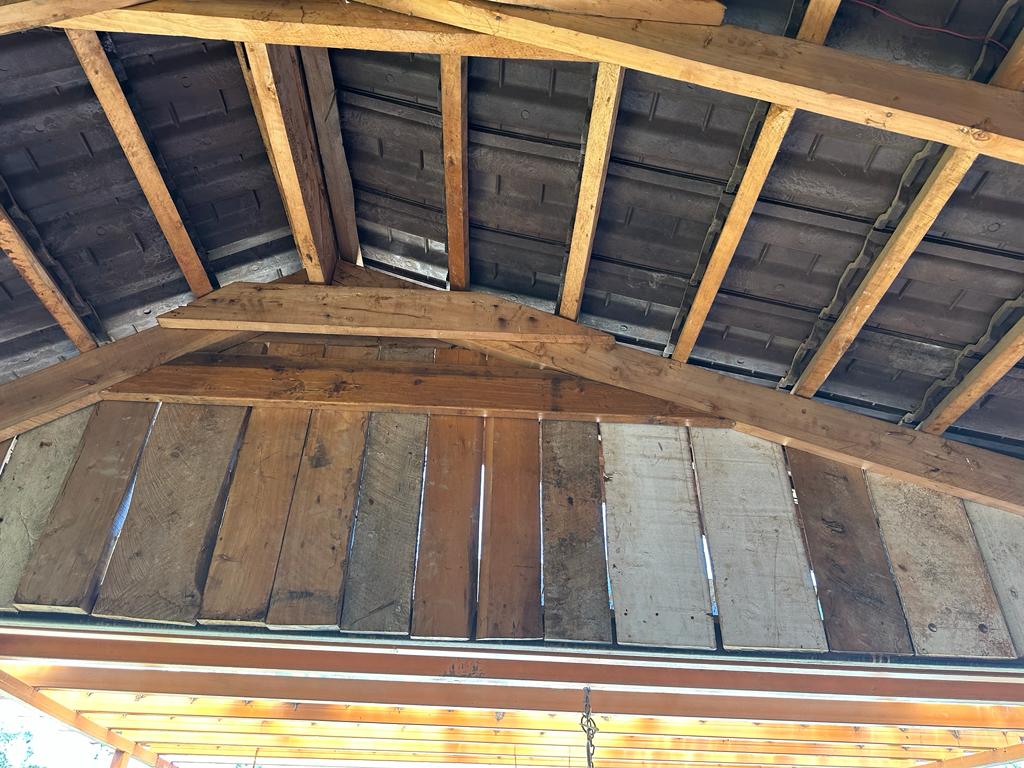
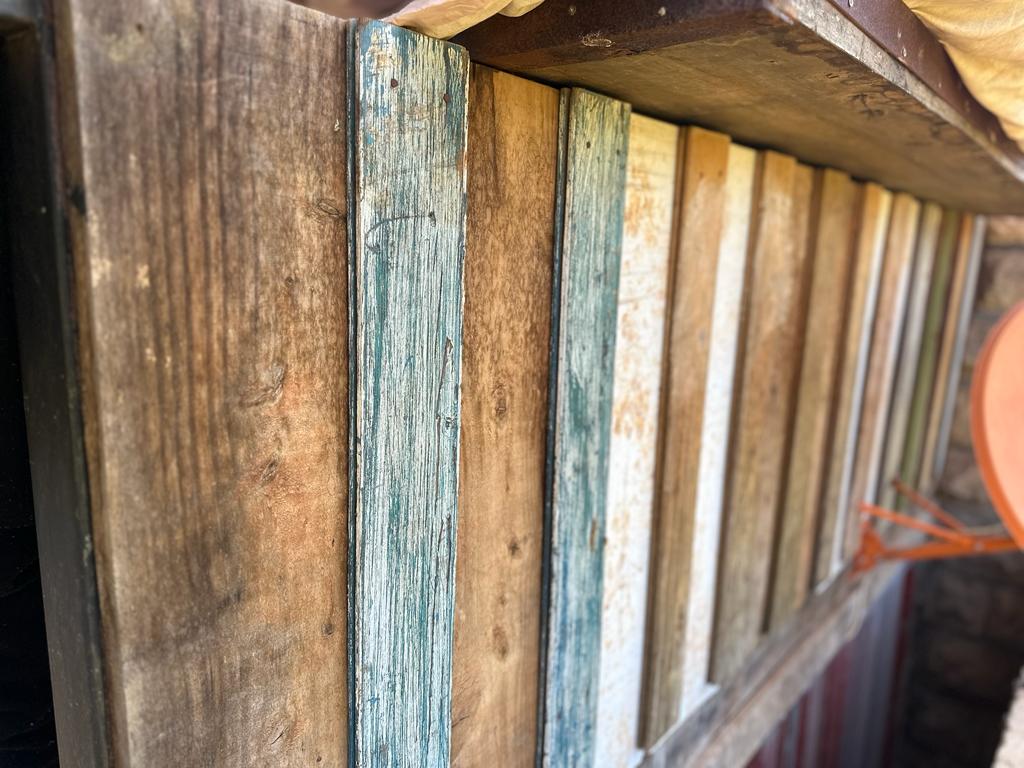
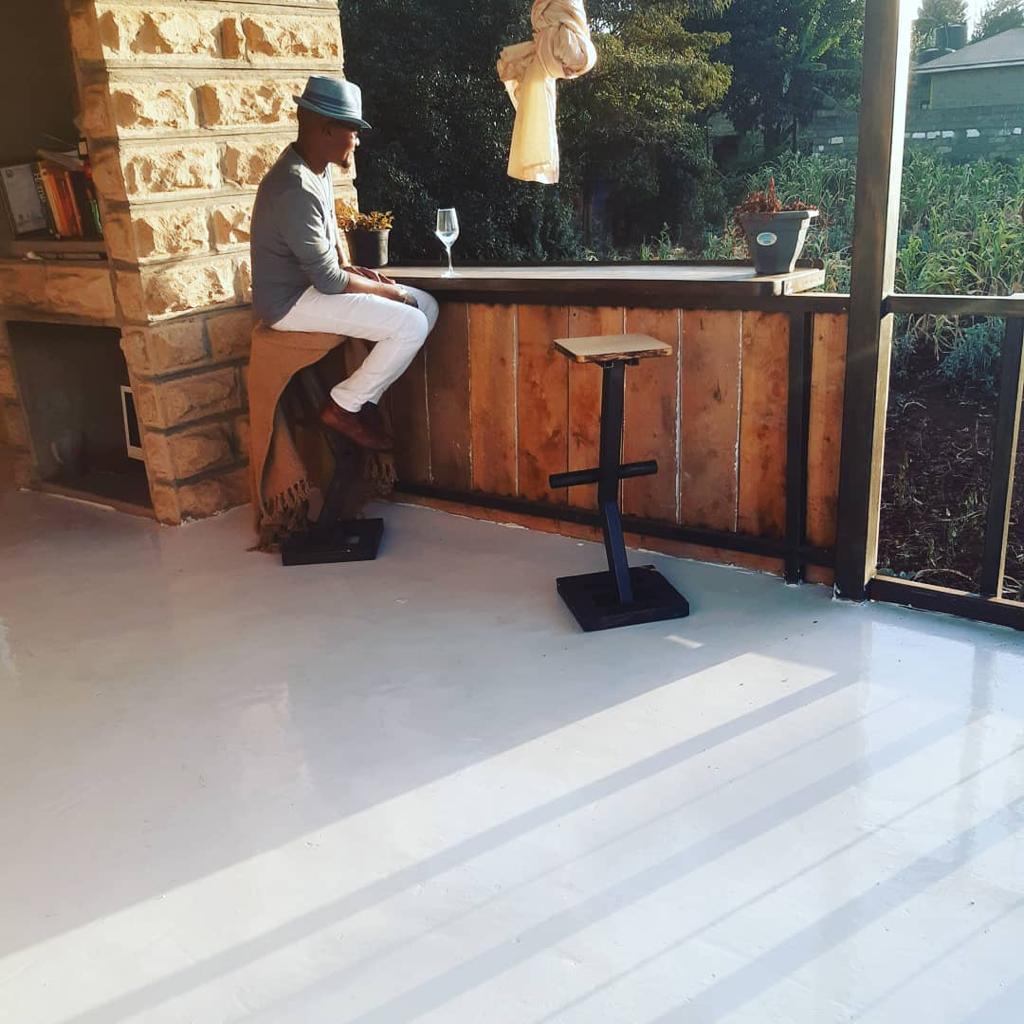
- Payprus Hand Woven Mats (Jambi) as Ceilling and Insulation: This is an eco-friendly and affordable method of insulating your home. The mats are made from natural fibres and are woven in a traditional style. They are breathable, waterproof, and provide excellent insulation properties. Payprus hand woven mats can be found in many markets in Kenya and can be used as ceiling and insulation.
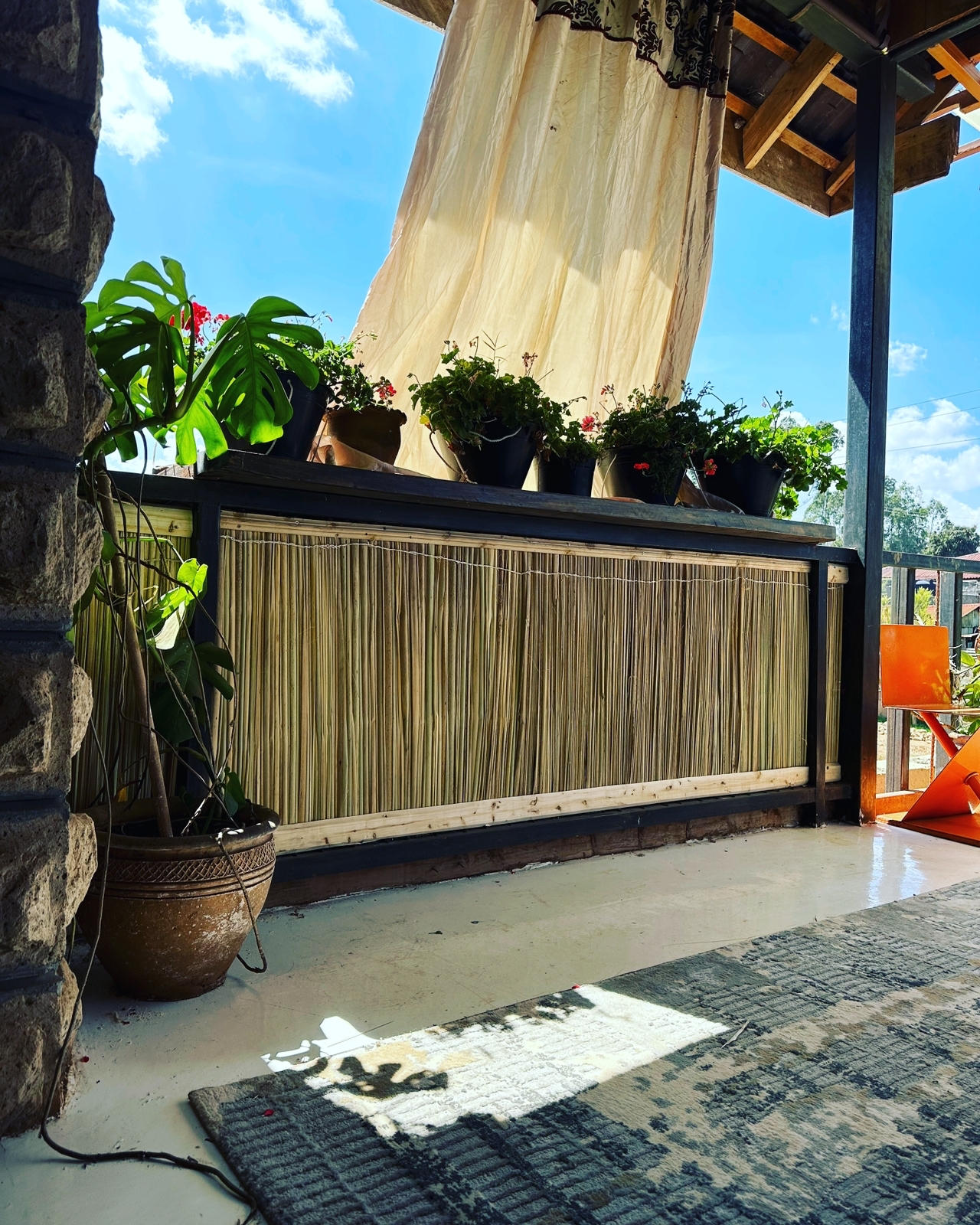
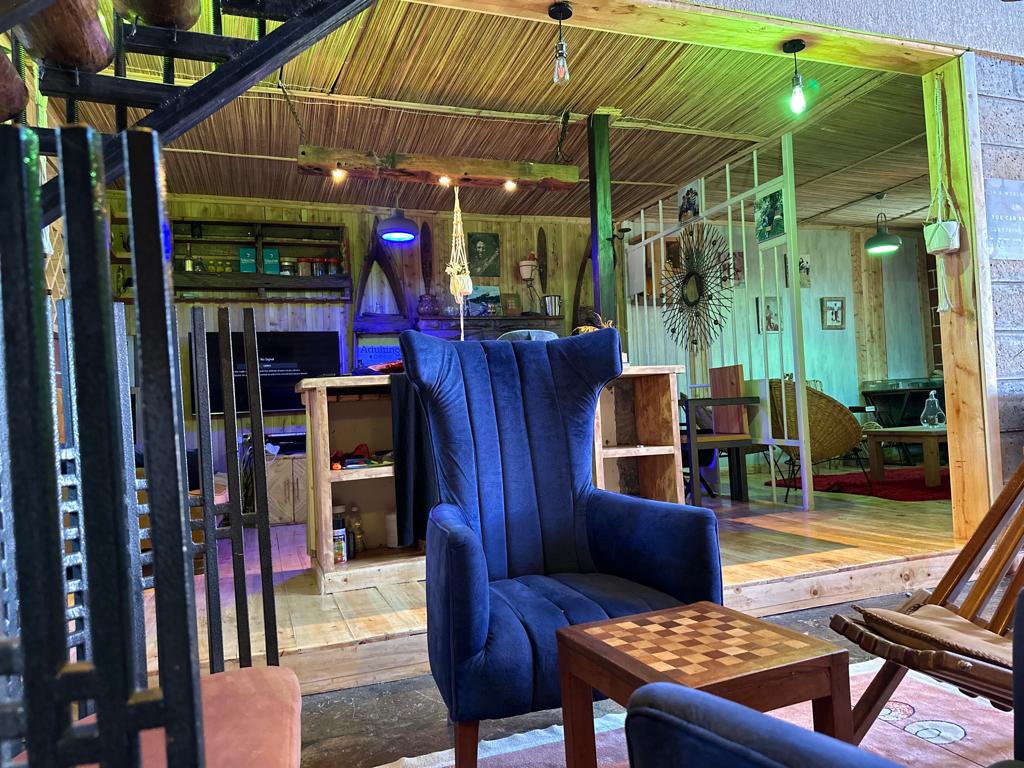
- Maasai Sticks as Pergola Trellis instead of Industrial Polycarbonate Sheets: This is an eco-friendly and cost-effective alternative to industrial polycarbonate sheets. Maasai sticks are made from locally harvested wood and can be used to create a traditional and aesthetic trellis for your garden or patio. They are hardy and can be used for many years without needing to be replaced.
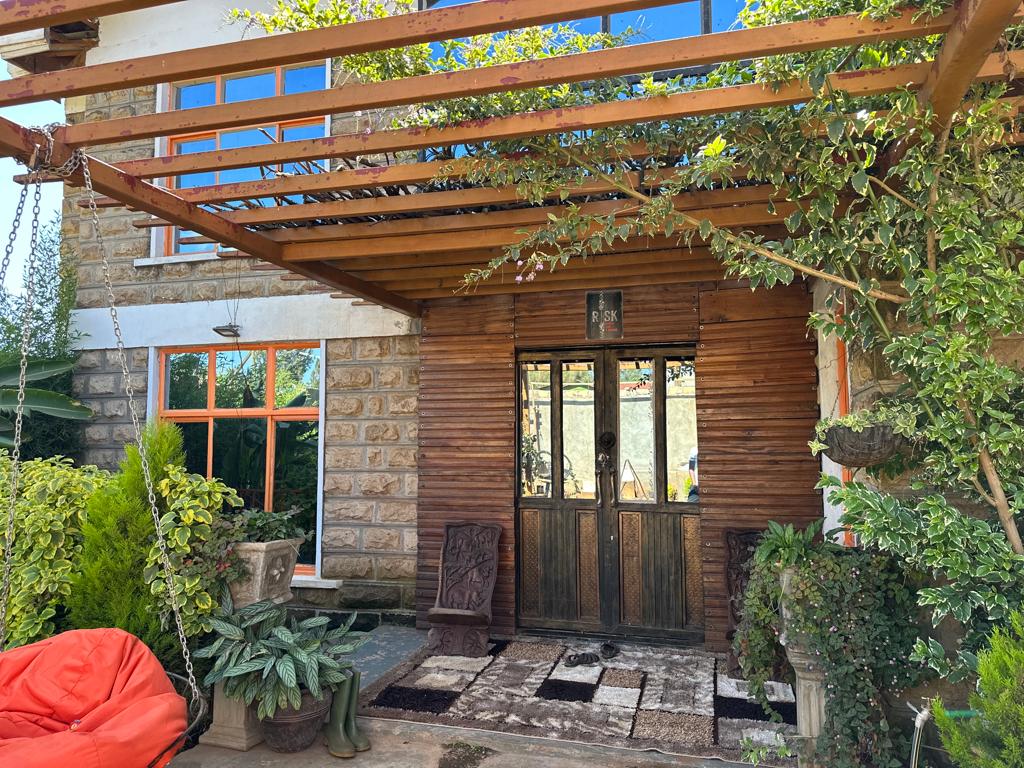
- Old Petroleum Drums for Gates instead of New Sheet Metal:
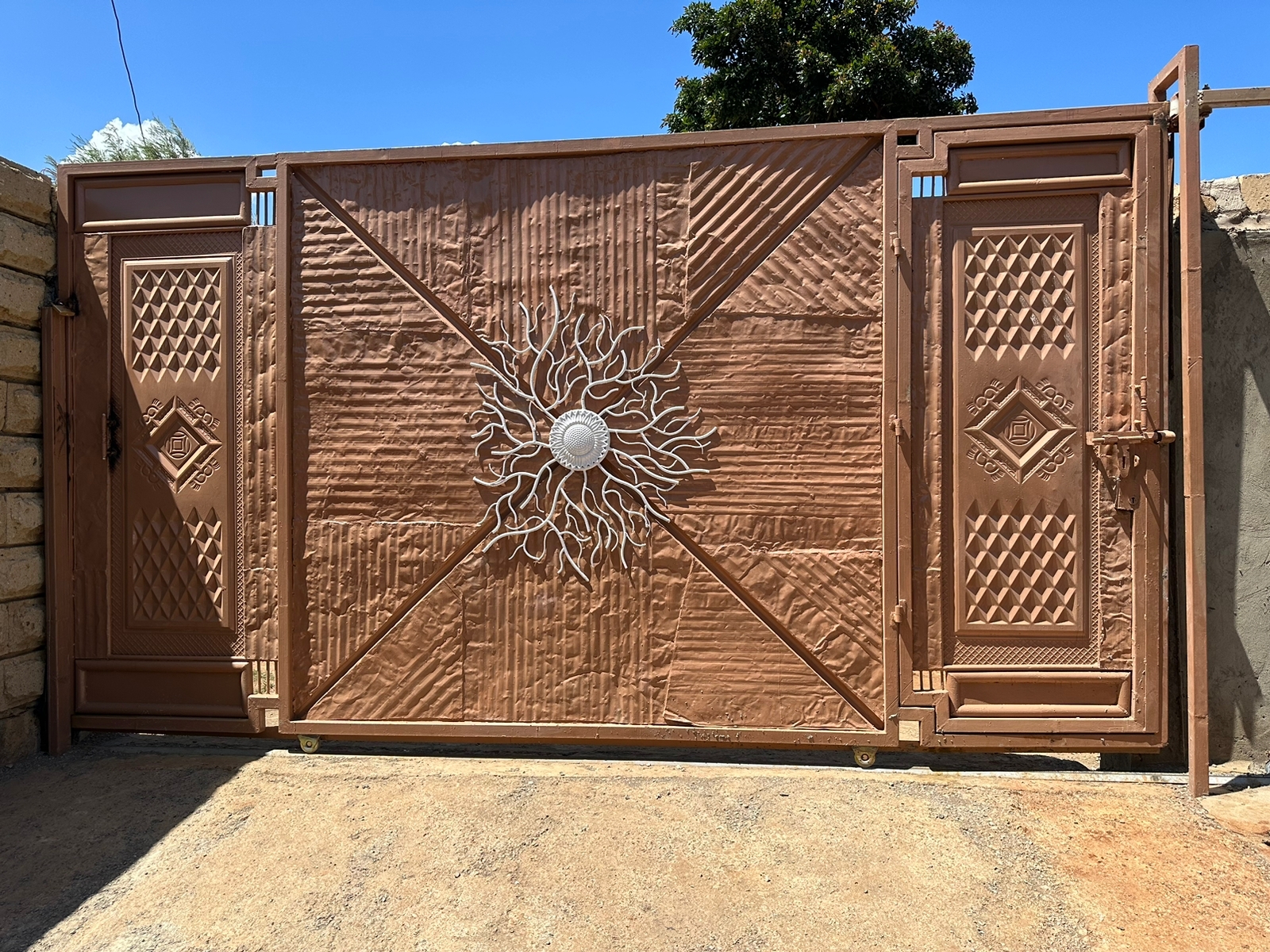 This is an eco-friendly and cost-effective alternative to new sheet metal. Old petroleum drums can be repurposed and used to create sturdy and attractive gates. They are often easy to find and can be a great way to save money and reduce waste. One drum costs about Eight Hundred Shillings. Using these can cut down the cost of sheet metal significantly. ( A typical gate would cost about One Hundred Thousand to fabricate)
This is an eco-friendly and cost-effective alternative to new sheet metal. Old petroleum drums can be repurposed and used to create sturdy and attractive gates. They are often easy to find and can be a great way to save money and reduce waste. One drum costs about Eight Hundred Shillings. Using these can cut down the cost of sheet metal significantly. ( A typical gate would cost about One Hundred Thousand to fabricate)
CONCLUSION:
People suffer in Kenyan Construction industry because of Costly Inputs yet, as can be seen above, “Every costly building material has a substitute…”
For example, while building my house, i embraced several local solutions. Instead of doing a typical reinforced concrete staircase, I bought 1 tree at Kes. 3,000 and fabricated the Staircase by splitting the logs into half and polishing the girth and exposed surfaces.
Did I do Gypsum boards for all my ceiling? NO.
The more we embrace locally available substitutes and bring new materials to the Act of Building, the more affordable housing will become. But our fate is that we don’t accept our own things. And so the suffering must continue.
“As to methods there may be a million and then some, but principles are few. The man who grasps principles can successfully select his own methods. The man who tries methods, ignoring principles, is sure to have trouble.” —Ralph Waldo Emerson
- Qs. Nahinga David
